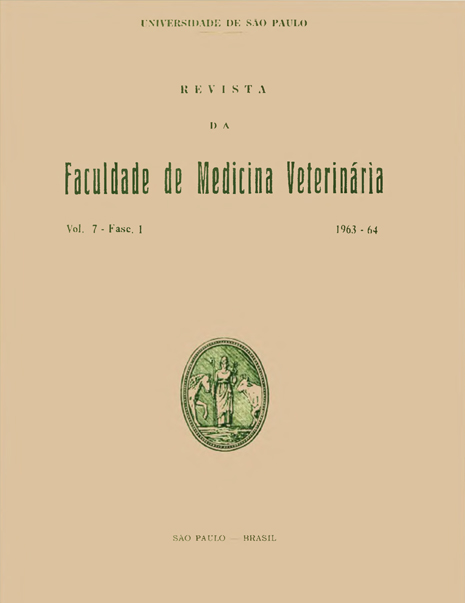Applicability of the indicator method - chromic oxide - for the apparente digestibility determination in Leghorn chickens
DOI:
https://doi.org/10.11606/issn.2318-5066.v7i1p191-210Keywords:
The article has no keywords.Abstract
The authors studied the applicability of chromic oxide method in determining the digestibility coefficients of commercial ration in Leghorn chickens. Male Leghorn chickens 47 days old, obtained from a commercial hatchery were divided in two different groups, one with eleven and other with five chickens, which were placed in collective batteries. Water and food were supplied "ad libitum" throughout the experiment. After a seven days preliminary period, ration was controlled and feces collections started according the following scheme:
1. individual feces obtained two times a day. - 7 A.M. and 6 P.M. during five consecutive days. The chicken was placed in an individual cage just the time to eliminate a feces sample;
2. feces per lot collected at 7 A.M. and 6 P.M.;
3. total feces, collected throughout the experiment;
4. daily feces for 24 hours successive periods.
The level of chromic oxide indicator added to the ration was 0,27% on dry matter basis. By the orientation which was followed in this work, it seems licit to conclude:
a - due to the reduced error causes showed, it seems that the chromic oxide indicator method offers a more accurate digestibility data as compared to the conventional one;
b - sucessive collection periods of 24 hours, per group, showed the most accurate results as compared with the total collection;
c - in spite of leaving aside individual variations, the adoption of chickens groups for digestibility determination, showed to be an efficient method since the feces collection is adequate;
d - the indicator levels, obtained in individual feces or from separate collection, at 7 A.M. or 6 P.M. during five consecutive days, showed extremely low results, as compared with the total collection;
e - the recovery tests utilized, were not totally efficient in determining the accuracy of the used method due to the fact that those tests are influenced by various problems such as feces collections and the exact determination of consumed ration.


